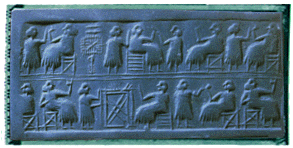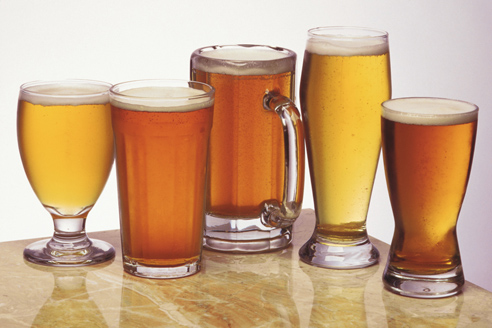Monks of the Screw
by John Philpot Curran
When Saint Patrick this order established,
He called us the Monks of the Screw
Good rules he revealed to our Abbot
To guide us in what we should do;
But first he replenished our fountain
With liquor the best in the sky;
And he said on the word of a Saint
That the fountain should never run dry.
Each year when your octaves approach,
In full chapter convened let me find you;
And when to your convent you come,
Leave your favourite temptation behind you.
And be not a glass in your convent
Unless on a festival found;
And this rule to enforce I ordain it –
One festival all the year round.
My brethren, be chaste till you're tempted;
While sober be wise and discreet;
And humble your bodies with fasting,
As oft as you've nothing to eat.
Yet in honour of fasting one lean face
Among you I'd always require;
If the Abbott should please, he may wear it,
If not let it come to the Prior.
Come, let each take his chalice, my brethren,
And with due devotion prepare.
With hands and with voices uplifted
Our hymn to conclude with a prayer.
May this chapter oft joyously meet
And this handsome libation renew,
To the Saint, and the Founder, and Abbot,
And Prior, and Monks of the Screw!
Celebrating the history of food and cuisine. All are invited to add to the feast. (please mind your manners) (eructations are applauded or forgiven whatever the cultural norms may be)
Those truffles too are no bad accessaries,
Follow'd by 'petits puits d'amour'—a dish
Of which perhaps the cookery rather varies,
So every one may dress it to his wish,
According to the best of dictionaries,
Which encyclopedize both flesh and fish;
But even sans 'confitures,' it no less true is,
There 's pretty picking in those 'petits puits.'
Byron
Don Juan Canto 15
Follow'd by 'petits puits d'amour'—a dish
Of which perhaps the cookery rather varies,
So every one may dress it to his wish,
According to the best of dictionaries,
Which encyclopedize both flesh and fish;
But even sans 'confitures,' it no less true is,
There 's pretty picking in those 'petits puits.'
Byron
Don Juan Canto 15
Saturday, December 31, 2011
Then as now, beer for the masses and wine for the elite?
A "banquet" scene on an impression of a lapis cylinder seal from Queen Pu-abi's tomb. A male and female on either side of a wide-mouthed jar are shown imbibing barley beer through drinking tubes, while others below raise high their cups, probably containing wine, which is served from a spouted jar.
It has usually been argued that barley beer was the alcoholic beverage of choice in ancient Sumer,
since the hot, dry climate of southern Iraq makes it difficult to grow grapevines, and the textual evidence for viniculture and winemaking in Mesopotamia is minimal before the 2nd millennium B.C. But based on chemical evidence for wine inside jars that could've been used to transport and serve it, wine was probably already being enjoyed by at least the upper classes in Late Uruk times (ca. 3500-3100 B.C.)
But then, what of the grape?
| MesopotamiaUnder the Grape Arbors... |
It has usually been argued that barley beer was the alcoholic beverage of choice in ancient Sumer,
|
In the beginning there was fish, that made us smart... then we invented beer
So the ancient Egyptians paid for the labor for the building of the pyramids in credits that bought the workers what? Beer!
Monday, December 19, 2011
First Things First
What is the world's oldest known recipe?
Subscribe to:
Posts (Atom)

